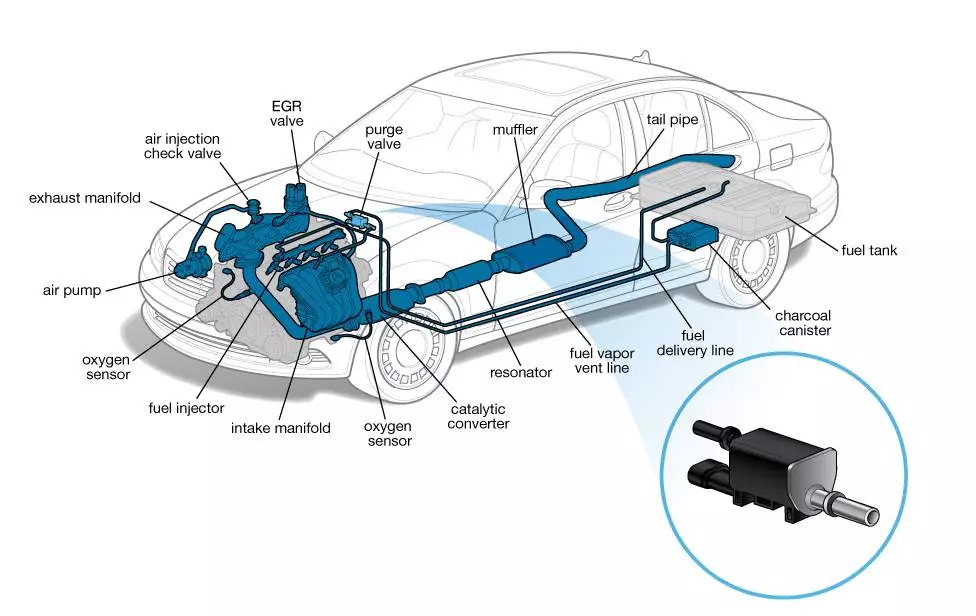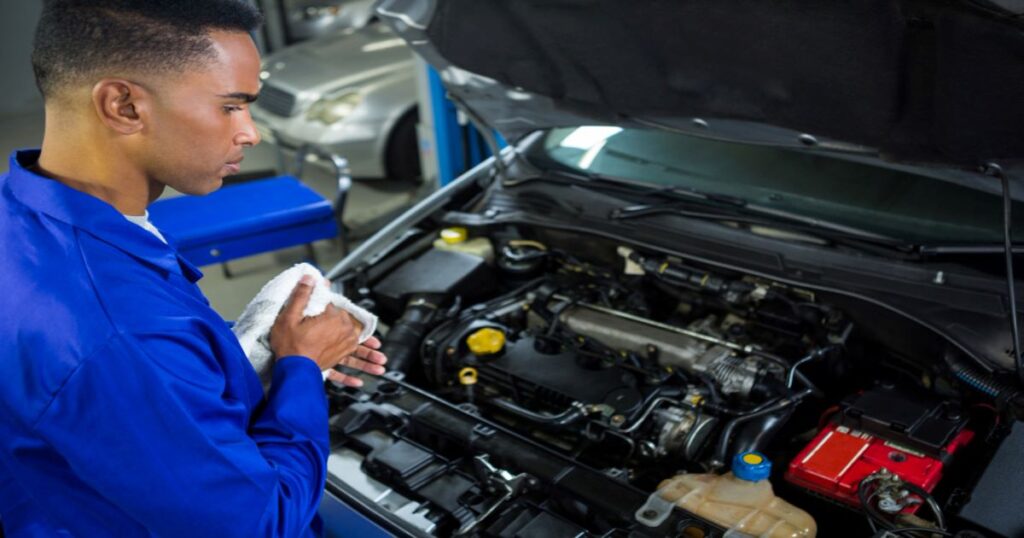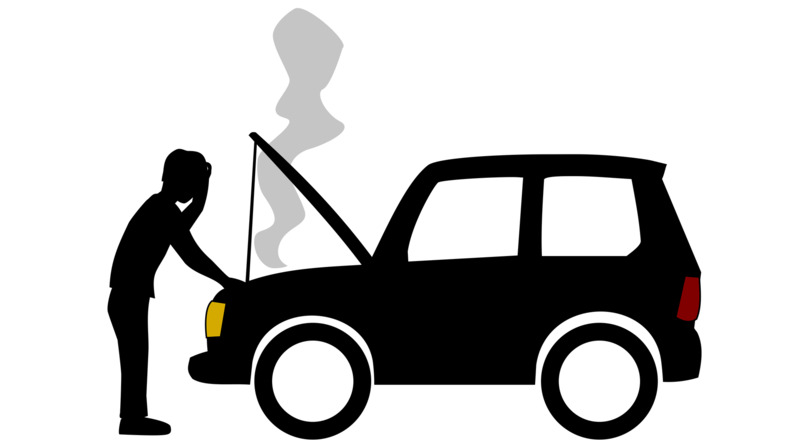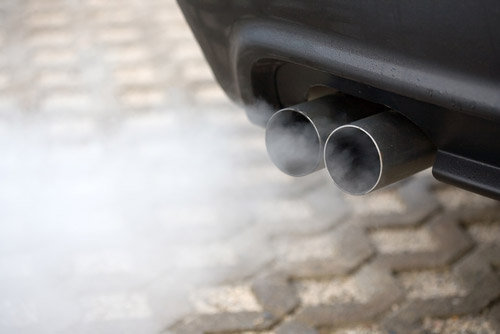The purge valve is a vital component of a car’s evaporative emission control system. Its purpose is to control fuel vapor flow and prevent harmful emissions by directing vapors from the charcoal canister to the engine. The purge valve is located between the charcoal canister and the intake manifold, and it opens and closes to regulate airflow.
When you switch off your engine, the purge valve closes to block fuel fumes. But when the engine’s running, the valve opens to redirect stored fuel vapors into the engine. This way, toxins get burned up instead of leaking out. Allowing the engine to combust excess fumes means fewer emissions, helping keep our air clean. By opening or closing to seal in or redirect vapors, the purge valve reduces emissions and does its part to keep our air clean.
Over time, a purge valve in a car can become faulty and as a result, the positive pressure on your car’s fuel tank won’t be maintained. How will you know it’s time to fix or replace your car’s purge valve? Here are 5 common symptoms of a bad purge valve:
Bad Purge Valve Symptoms
When the purge valve goes bad, it direly impacts the car’s performance. So you need to check the condition of the purge valve from time to time.

1. The Engine Light Tells Everything

A damaged purge valve can lead to misfires and reduce engine performance. In some cases, it can also cause the engine to stall. If your engine light is on, it could be a symptom of a bad purge valve. The car engine has a few sensors that can detect whether the purge valve is in working condition or not. If you notice there is no certain signal coming from the purge valve, the sensors will get an indication that the valve is most probably damaged. After that, the sensors will pass on this information to the car engine control unit.
2. Car’s Idle Is Rough
When your car has a rough idle, it’s not just an annoyance. It’s also a symptom of a problem that needs to be fixed. And in most cases, that problem is a bad purge valve. The purge valve is responsible for letting fresh air into the engine after the combustion process. If the valve is damaged or dirty, it can’t do its job properly, and the engine will have trouble running. Driving with a bad purge valve will let you know how the car finds difficulty in running smoothly, especially when you want to stop or slow it at a red signal or a stop sign.
3. Car Does Not Start

If your car is having trouble starting, it could be a symptom of a bad purge valve. The purge valve controls the flow of fuel vapor from the evaporative canister to the engine. If the valve is stuck open, it will allow too much vapor to enter the engine, causing the engine to flood and making it difficult to start. If you suspect that your car has a bad purge valve, have it checked by a professional without causing any further delay. Ignoring the issue may cause serious engine damage.
4. Engine Performance Declines
If your car’s engine is running rough, it could be the symptom of a bad purge valve. The purge valve is responsible for allowing fresh air into the engine’s intake system. If the valve is stuck closed, it can cause a loss of power and decreased fuel efficiency. In some cases, it can also cause the engine to stall. If you find out that your purge valve is the main problem, have it checked out by a mechanic. They’ll certainly be able to help you and, if necessary, replace the valve.
5. Emissions Test Does Not Go Well

Like most mechanical things, your car’s purge valve can go bad over time and cause all sorts of problems. One of the most common signs of a bad purge valve is a failed emissions test. The purpose of the purge valve is to allow fresh air into the engine to mix with the fuel vapors so they can be burned off. If the purge valve is not working properly, those vapors will escape into the atmosphere and cause the vehicle to fail an emissions test. Luckily, a failed emissions test is usually just a symptom of a bad purge valve and not a serious problem with your engine. So, if your car fails its next emissions test, it might be time to replace the purge valve.
READ ALSO: How to Test Purge Valve With a Multimeter?
How to Fix The Problem of Bad Purge Valve
To ensure your car is running properly, it is important to fix the problem of a bad purge valve. The purge valve is responsible for removing any excess fuel vapor from the carburetor before it enters the engine. If the valve is not working properly, it can cause the engine to run rough and stall. Fortunately, this is a relatively easy problem to fix. Simply clean or replace the purge valve and make sure there is a good seal between the carburetor and the engine. This will help keep your car up and running.
Final thoughts,
If you are experiencing any of the symptoms of a bad purge valve, it is important to take action and have the issue fixed as soon as possible. Not only can a bad purge valve cause your car to perform less efficiently, but it can also lead to dangerous situations like carbon monoxide poisoning. By following the tips in this article, you can diagnose and fix a bad purge valve on your own. If you are uncomfortable performing these repairs, ask for reputed, experienced, and reliable professional assistance to take care of this issue for you.
FAQs
1. How long can you drive with a bad purge valve?
It depends on how bad the purge valve is. If it’s just a little bit busted, you might be able to get away with driving for a while. But if it’s really messed up, you won’t be able to drive at all.
2. Can a bad purge valve cause no start?
Your engine’s purge valve is responsible for removing any remaining fuel vapors from the fuel system. If this valve is not functioning properly, it can cause your engine to hesitate or not start at all.
3. How serious is a bad purge valve?
A bad purge valve can be quite serious. If the valve is not functioning properly, it can allow large amounts of oil to pass through and contaminate the engine. This can cause a decrease in engine performance and oil pressure, and in some cases, engine damage.
4. How much does it cost to get a purge valve replaced?
The cost of replacing a purge valve will vary depending on the make and model of a particular vehicle. However, it is a relatively reasonable repair.
5. Will a purge valve make noise?
Normally a purge valve makes a ticking noise which signifies that the valve is in good working condition. If the valve makes a loud noise, it can be a sign of its internal failure.
6. Is a purge valve easy to replace?
It’s not too difficult to replace a purge valve, but it can be a little tricky if you’re not familiar with the process.
